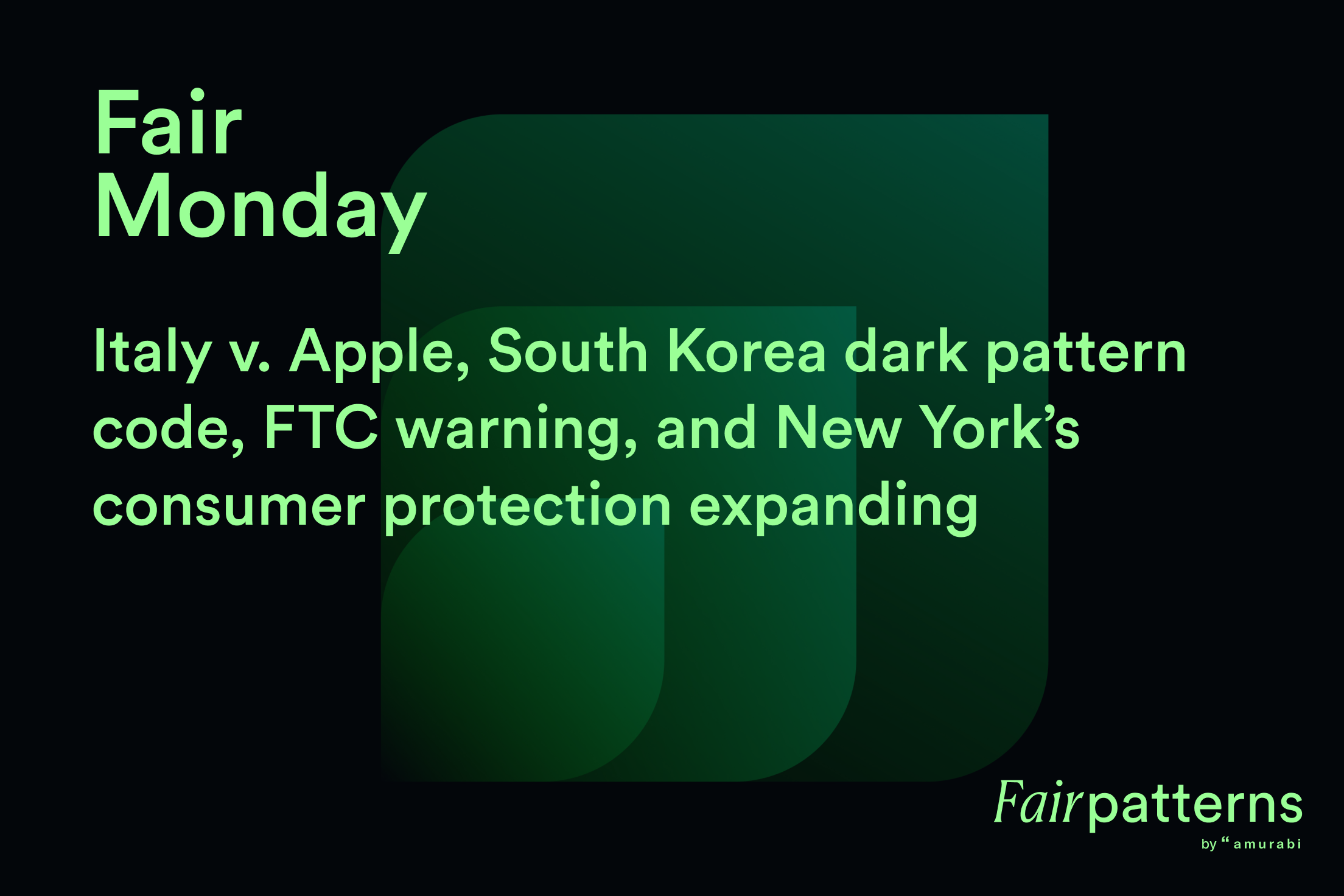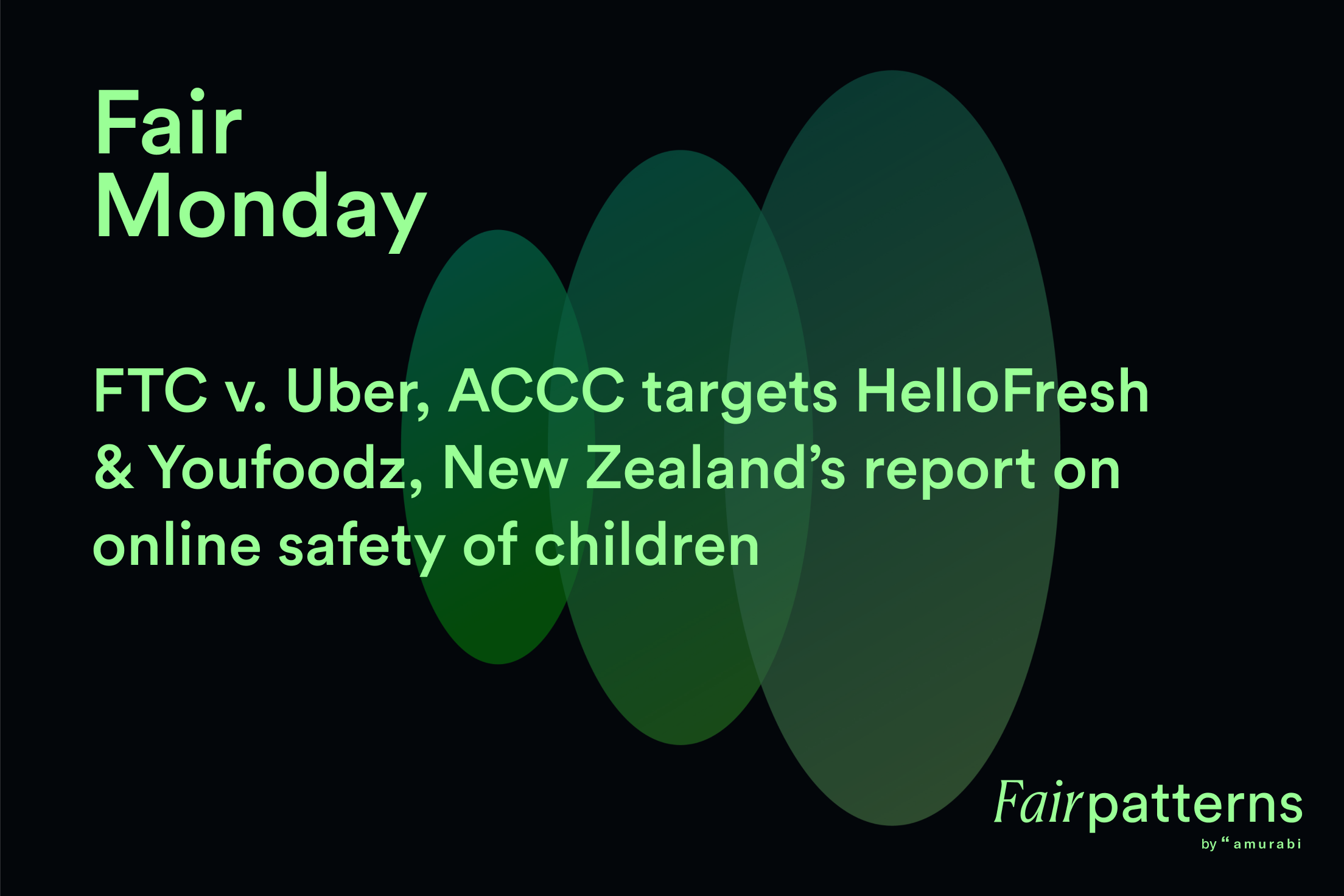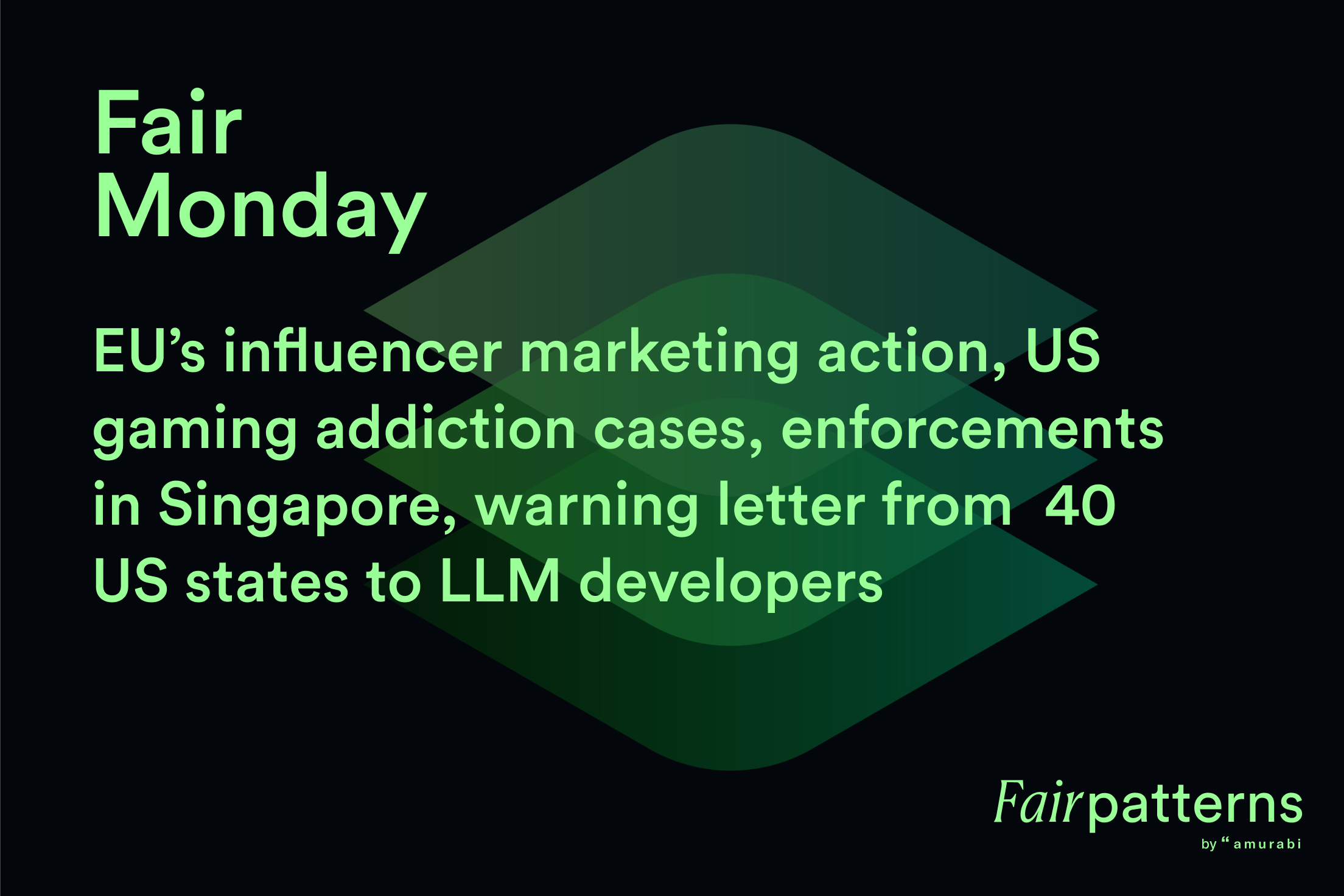We take the headache out of digital compliance.
We turn your digital legal obligations into design solutions, so you can focus on growing your business.

Find digital compliance issues
Our AI solutions find dark patterns and other digital legal violations on sites and apps. Avoid fines, class actions and reputational risks
Fix digital violations with design solutions
Our library Fair Patterns translate legal advice into interfaces. Happier users, more sustainable growth.
Create compliance by jurisdiction
Our AI agent empowers your designers and developers to avoid creating new dark patterns at the mockup stage
Supercharge your enforcement against dark patterns
We help you map, prioritize and carry out enforcement actions using scientific, verifiable evidence.

Strengthen regulatory oversight
Enhance your ability to oversee and regulate digital spaces by identifying dark patterns with precision.
Empower evidence-based actions
Use cutting-edge technology to analyze data, providing robust evidence for enforcement actions.
Advance legislative compliance
Facilitate a proactive regulatory approach that sets a benchmark for digital ethics and consumer protection.
Power up your compliance & litigation on dark patterns
Rigorous insights from psychology, neuroscience and UX design that can transform your cases. We find, test and fix dark patterns.

Supercharge your digital compliance audits with AI
Our AI solution finds dark patterns and other digital violations across any taxonomy. It pre-identifies applicable laws and risks so you can exercise your judgement and easily provide your legal advice
Enhance your case strategy
Gain a competitive edge in litigation with science-backed insights into user behavior and dark patterns.
Get the silver bullet in litigation cases and before regulators
Our Dark Patters User Testing Lab provides scientific evidence of manipulation and deception - or the absence thereof. The ultimate evidence that will make a differece in your case.
Solutions
Deceptive Design AI Agent
Ever wanted to prevent dark patterns from even becoming live? We've got you! That's why we created our Deceptive Design AI Agent. It empowers designers and developers to avoid creating new dark patterns at the mockup or integration stage.
Dark Pattern Screening
Our AI solution finds dark patterns and other digital violations on sites and app. It provides a risk prioritization and easily implemented design solutions.
Legal Document Design
Analyse your contracts, terms and privacy policies to ensure that they are written in a consumer-friendly style while being legally robust.
Consent Scanner
Gain instant insights on cookie practices across digital platforms, helping you uphold privacy standards and ensure compliance across websites.
Fair User Lab
A range of qualitative, quantitative and eye tracking research services to understand if products use any problematic dark patterns
Identifies both text, design and code issues, and understands context
Issues spotting + digital solutions
Legal advice easily embedded into interfaces
AI agent to avoid creating new breaches

Training
Unlock the power of fair design with our comprehensive training programmes.
Scheduled Masterclasses
Join other professionals for group training on one of the following dates
On-Demand Courses
Get in touch to schedule a private training course for your team
Free resources
Publications
Research and articles about dark patterns, user behaviour and law.
Regulations
Laws and regulations from around the world that relate to dark patterns.
Cases
Legal cases and enforcement actions from around the world that relate to dark patterns.
Jobs
Employment opportunities that relate to dark patterns and related areas
Events
Coming events about laws, dark patterns, tech ethics and related areas.
Upgrade your compliance knowledge

Speaking & Media
Marie Potel-Saville, Co-Founder & CEO of FairPatterns, is available for keynote speeches and speaking engagements.
Expertise Areas
• Dark Patterns & Digital Manipulation
• AI Ethics & Trustworthy Design
• Digital Fairness Regulations (GDPR, DSA, Digital Fairness Act)
• Consumer Protection in Digital Ecosystems
• Ethical AI Implementation
Invite Marie to Speak
Bring ethical design to the stage with Marie’s keynote on dark patterns and user trust.
Fair Patterns Podcast and Blog
Exploring the intersection of ethics, design, and compliance in the digital world
Awards & Associations










Meet Our Team
Our expert auditors, researchers, and legal professionals.


































































